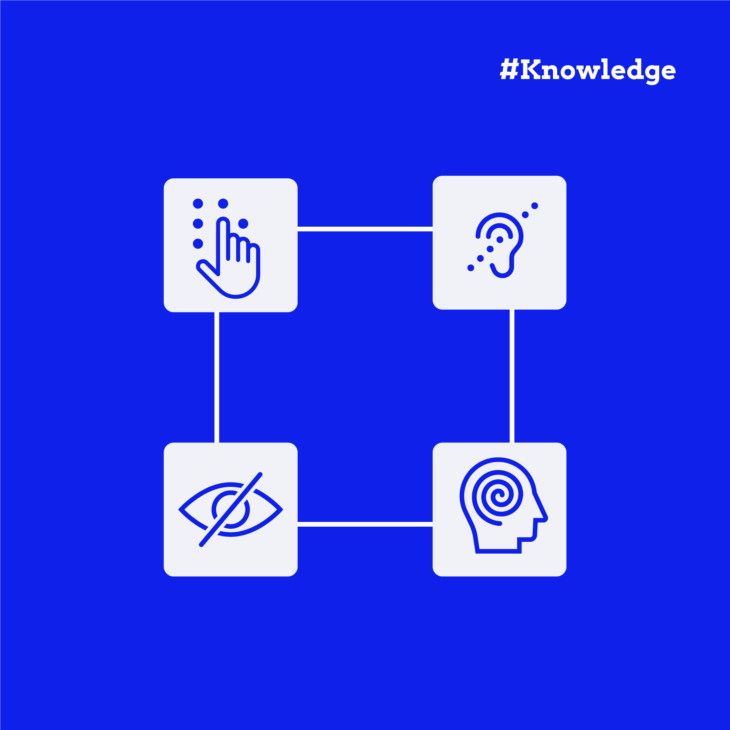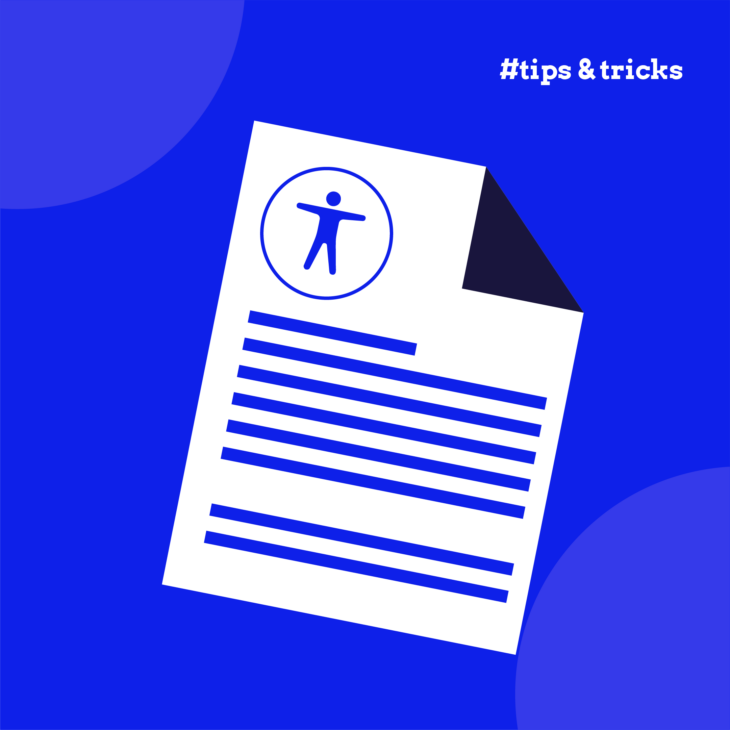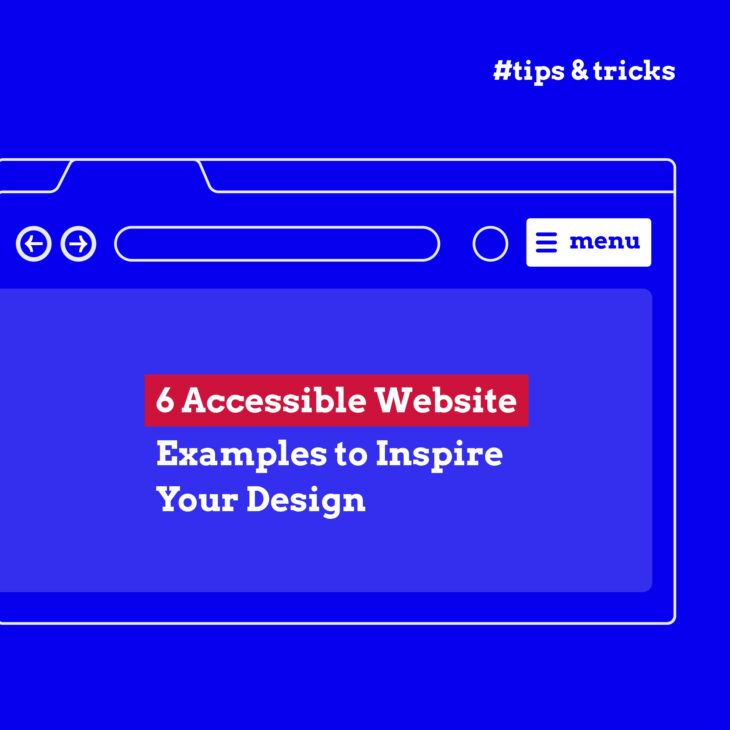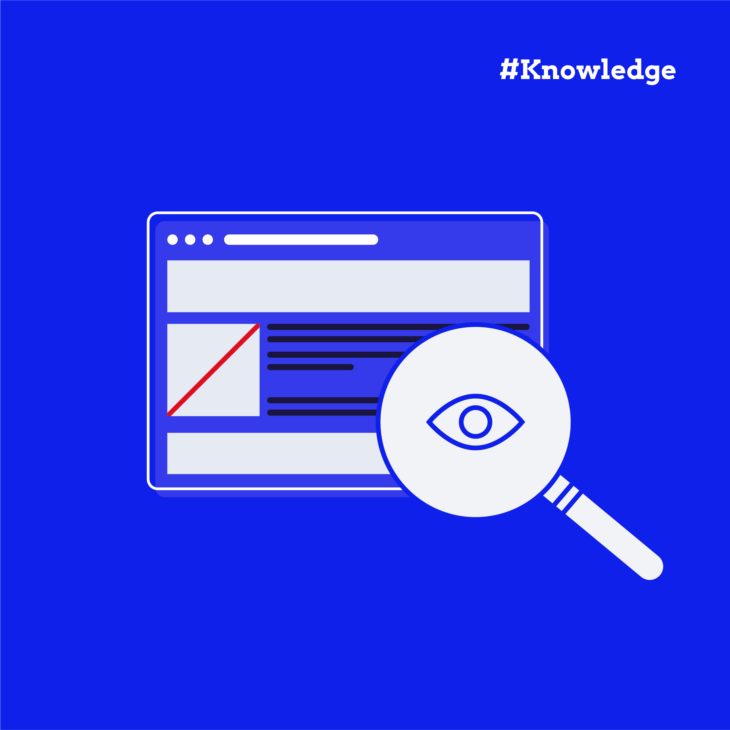Did you know that approximately 16% of the global population lives with disabilities? Yet shockingly, most websites continue to fail basic accessibility checks. This creates barriers for millions of people trying to use online services and products every day.
As designers and developers, our number one priority should be to create products everyone can use – it is our ethical and legal responsibility. Besides that, accessibility lets businesses uncover significant untapped markets.
That’s not to say it’s an easy thing to do. First, you’ll need to understand the four main types of accessibility needs: visual, hearing, motor, and cognitive. Each requires specific design approaches and technical implementations. Then, you need to use this knowledge and the relevant accessibility guidelines to craft truly inclusive solutions.
We’ll help you understand these accessibility categories, introduce you to important assistive technologies, and provide practical implementation strategies that you can start using right away.
Let’s start with the basics:
What does accessibility mean?
Accessibility is the practice of ensuring equal access to products, services, environments, and information for all people, regardless of ability. In the online spaces, this means creating websites, apps, and content that people with various disabilities can perceive, understand, navigate, and interact with effectively.
You might have seen the term “A11Y” used in tech circles (and in our own name). This is a numeronym where “A” and “Y” are the first and last letters of “accessibility” with “11” representing the number of letters between them. It’s a shorthand that has become popular in the tech community.
Naming conventions aside, if you have to take one thing out of this article, let it be this: accessibility is not an add-on feature or a box to tick – it’s an integral part of good design that benefits everyone. For example, captions don’t just help people who are deaf – they also benefit people watching videos in noisy environments, those learning a new language, and individuals with auditory processing disorders.
And naturally, there’s no one-size-fits-all approach to accessibility. Different disabilities require different solutions:
- Someone who is blind needs different accommodations than someone with limited mobility.
- A person with dyslexia has different needs than someone who is deaf.
- Even people with the same disability might use different assistive technologies.
Throughout this article, we’ll explore these varying needs and how to address them effectively. However, if you’re keen to deepen your understanding of accessibility fundamentals, our “Web accessibility, the basics” course is an excellent starting point.
Understanding the needs of your users
When creating accessible digital experiences, it’s helpful to understand the main categories of disabilities and how they affect people’s interactions with technology. Let’s explore the four primary types of accessibility needs and the tools that help bridge these gaps.
Visual disabilities
Visual disabilities range from mild to severe, including colour vision variations (sometimes called “colour blindness”), low vision, and blindness. About 8% of men and 0.5% of women experience some form of colour vision differences, making it difficult to distinguish between specific colours.
For people with visual impairments, the most significant barriers include websites with poor colour contrast, unlabelled images, or information conveyed solely through visuals (e.g., showing a form error only by making the field red).
💡 Did you know: Low contrast text is the most commonly found accessibility error, according to research by WebAim that analysed the top 1 million websites.
Hearing disabilities
People who are deaf or hard of hearing frequently encounter barriers when websites rely exclusively on audio content. Without captions or transcripts, video and audio content becomes completely inaccessible.
Think about important sound alerts or notifications – how would someone who can’t hear know when a form submission fails or a message arrives if these are only indicated by sounds?
Motor disabilities
Motor disabilities affect movement and coordination, impacting how people use keyboards, mice, and touchscreens. Conditions like cerebral palsy, arthritis, and spinal cord injuries can make fine motor movements challenging.
Small buttons, complex gestures, and time-limited interactions can be particularly frustrating, especially if your website or app features tiny click targets that are closely spaced or forms that time out quickly.
Cognitive disabilities
Cognitive disabilities include dyslexia, attention deficit disorders, autism spectrum conditions, and memory impairments. These affect how people process, remember, and understand information.
For example, complex language, inconsistent layouts, and distracting elements can make websites virtually unusable for people with cognitive disabilities. Clear structure, simple navigation, and straightforward content benefit everyone, but they’re essential for these users.
Accessibility technologies
Fortunately, various technologies help people with permanent disabilities navigate digital spaces:
| Type of disability | Common assistive technologies |
|---|---|
| Visual | Screen readers like JAWS, NVDA, and VoiceOver that convert text to speech; screen magnifiers that enlarge portions of the screen. |
| Hearing | Closed captioning for videos; transcripts for audio content; visual cues for sound information. |
| Motor | Voice recognition software; eye-tracking interfaces; specialised mice and keyboards; switch controls activated by minimal movements. |
| Cognitive | Text-to-speech tools; reading assistance software with highlighting; predictive text; content simplification tools. |
Additional ability barriers
Many people associate accessibility with permanent disabilities. It’s better to think about it this way: Accessibility means making sure that your website or app works for as many people as possible. There are several temporary and situational barriers that can affect anyone:
Temporary disabilities
Many people experience short-term conditions that create similar challenges to permanent disabilities:
- A broken arm that makes typing difficult.
- Recovery from eye surgery that temporarily affects vision.
- An ear infection that’s causing temporary hearing loss.
These conditions may last only days or weeks, but during that time, the person faces many of the same barriers as someone with a permanent disability.
Situational limitations
Ever tried reading your phone in bright sunlight? That’s the most common example of experiencing a situational visual impairment – the same barrier faced permanently by people with low vision.
Other common situational limitations include:
- Watching videos in a library or office where playing sound would disturb others.
- Using a device one-handed while holding shopping bags or a baby.
- Trying to complete a complex form while distracted by noise, interruptions, or stressful environments.
Age-related changes
As we age, our vision, hearing, motor control, and cognitive processing naturally change. Research shows that standard assistive technologies don’t always adequately address older adults’ unique combination of needs, which tend to cross multiple disability categories simultaneously.
This highlights why flexible, adaptable design is so important – it needs to accommodate the wide spectrum of abilities that we all move through during our lives.
Accessibility legislation and compliance
Web accessibility is increasingly becoming a legal requirement across the globe (and for good reason). The Web Content Accessibility Guidelines (WCAG) provide a structured framework through four fundamental principles known as POUR:
- Perceivable: Information must be presented in ways users can perceive, regardless of sensory abilities.
- Operable: Interface components must be usable by everyone.
- Understandable: Content and operation must be easy to comprehend.
- Robust: Content must be compatible with current and future technologies.
WCAG also divides compliance into three progressive levels, each building on the previous:
- Level A: Basic accessibility requirements that address major barriers.
- Level AA: Addresses significant and common barriers; this is the standard most legislation requires.
- Level AAA: The highest level of accessibility, addressing subtle and specialised barriers.
Around the world, numerous legal frameworks now mandate digital accessibility. The most well-known ones are:
- The Americans with Disabilities Act (ADA), which has been interpreted by courts to apply to websites, requires reasonable accommodations for people with disabilities.
- The European Accessibility Act provides specific technical requirements for digital products and services, creating a unified standard across the EU.
If you think they sound serious, you’re absolutely right. The financial impact of non-compliance can be substantial, and in recent years, there has been a sharp rise in accessibility lawsuits, with settlements often reaching hundreds of thousands or even millions of pounds.
Now that we’ve given you good reason to be invested, let’s explore:
How to make your website accessible
Building accessible websites requires implementing specific techniques for different disability types. Each approach not only serves specific disability groups but also creates a better experience for all users.
Visual accessibility: designing for users with sight impairments
Creating websites accessible to people with visual impairments like colour blindness requires attention to structure, description, and contrast:
Structural clarity
- Use proper heading hierarchy (H1-H6) to create a logical document outline that screen readers can navigate.
- Implement semantic HTML elements like
<nav>,<main>, and<article>to provide meaningful structure. - Create a logical tab order that matches the visual flow of content.
Informative alternatives
- Write descriptive alt text for informative images, focusing on their purpose rather than appearance.
- Create text alternatives for complex visualisations, charts, and infographics.
- Provide text alternatives for all non-text content that conveys meaning.
Visual design considerations
- Maintain contrast ratios of at least 4.5:1 for normal text and 3:1 for large text.
- Use multiple cues beyond colour alone – add patterns, icons, or text labels to convey information.
- Ensure layouts function properly when text is resized up to 200%.
- Design focus indicators with sufficient contrast for keyboard navigation.
For comprehensive guidance on implementing these techniques, our “Accessible design, the basics” course offers modules on colour, typography, and navigation that align with WCAG requirements.
Auditory accessibility: creating content for deaf and hard-of-hearing users
Video and multimedia accommodations
- Provide accurate, synchronised captions for all video content, including both speech and essential non-speech sounds.
- Consider sign language interpretation for critical content, particularly for users whose primary language is sign language.
- Use accessible media players with keyboard controls and proper labelling.
Audio alternatives
- Create detailed transcripts for audio-only content such as podcasts and interviews.
- Ensure all audio alerts and notifications have visible equivalents.
- Include descriptions of meaningful background sounds in captions using brackets: [door slams], [phone rings].
Content clarity
- Use clear, straightforward language in captions and transcripts.
- Maintain consistent terminology throughout.
- Break transcripts into logical paragraphs for easier reading.
💡 Did you know? Netflix reports that approximately 40% of viewers use subtitles all the time. This makes auditory accessibility a mainstream feature that improves content comprehension for everyone, including those watching in noisy environments, people learning a language, or viewers who simply process information better when reading along.
Our “Writing accessible content for the web” course offers specific guidance on creating content that’s accessible to people with various disabilities, including users who are deaf or hard of hearing.
Motor accessibility: supporting users with physical and mobility limitations
Many users with physical disabilities rely on alternative input devices such as switch controls, eye tracking, or voice commands instead of standard keyboards and mice.
Keyboard accessibility fundamentals
- Ensure complete keyboard accessibility for all interactive elements.
- Test thoroughly with Tab, Enter, Space, and arrow keys.
- Design a logical tab order that matches the visual layout of the page.
- Provide clearly visible focus indicators with sufficient contrast.
- Eliminate keyboard traps where focus cannot move away from an element.
Navigation improvements
- Implement skip navigation links to allow users to bypass repetitive content.
- Group related controls logically to minimise unnecessary tab stops.
- Ensure that expandable menus can be operated with keyboard alone.
- Allow users to navigate through content in multiple ways.
Interactive elements
- Create target sizes of at least 24×24 CSS pixels for all clickable elements.
- Provide adequate spacing between interactive elements to prevent accidental activation.
- Avoid interactions that require precise timing or dexterity.
- Allow users to recover from accidental activations with confirmation options.
- Avoid time limits on tasks or provide options to extend time.
People with motor impairments often spend significantly more time navigating websites than users without disabilities. Simple improvements like larger targets and keyboard shortcuts can dramatically improve their experience, making the difference between a usable site and one they’ll abandon.
Looking to improve your accessibility skills as a developer? Our “Accessible code” course offers comprehensive guidance on implementing keyboard accessibility and designing for users with motor impairments.
Cognitive accessibility: designing for neurological and learning differences
If you want to create accessible experiences for people with cognitive, learning, and neurological differences, your main focus should be on reducing complexity and cognitive load. Here’s how you can do this:
Content structure
- Use clear, consistent navigation patterns and page layouts across your site.
- Structure content with descriptive headings that accurately reflect the content they introduce.
- Break information into manageable chunks with generous white space.
- Present information in a logical, predictable sequence.
Reading experience
- Write in plain language at an accessible reading level.
- Provide sufficient time to read and interact with the content.
- Allow users to control timing and pacing, avoiding automatic timeouts.
- Use clear, consistent formatting for similar types of information.
User-friendly interactions
- Implement confirmation steps for important actions like form submissions or purchases.
- Provide clear error messages with specific instructions for correction.
- Allow users to review inputs before final submission.
- Minimise distractions from auto-playing media and complex animations.
Safety considerations
- Avoid content that flashes more than three times per second to prevent seizures.
- Provide warnings before showing potentially triggering content.
- Offer simple ways to stop animated content.
For in-depth guidance on implementing complex interactive elements with cognitive accessibility in mind, check out our course “Advanced Accessible Components”.
How to test for WCAG compliance
Testing website accessibility requires a multi-layered approach, as WebAIM’s 2025 analysis shows that 94.8% of websites still fail to meet WCAG standards. This widespread non-compliance shows just how important it is to learn the art of proper accessibility testing (and to pay attention to it in the first place).
So, what does that include?
An effective accessibility evaluation should blend:
- Automated testing tools such as WAVE, Axe, or Lighthouse that scan your code for common issues like missing alt text or insufficient contrast. However, research shows 87% of accessibility testing relies solely on automated tools, which miss many real-world barriers.
- Manual testing by developers and designers who systematically check:
- Keyboard navigation flow.
- Screen reader compatibility.
- Focus visibility.
- Logical content structure.
- User testing with people who have disabilities provides insights that automated tools can’t detect. This is particularly valuable for complex interactive components where technical compliance might not translate to actual usability.
The most important part of testing, however, is that it has to be built into development cycles from the very beginning. Make it a part of your regular quality assurance processes and repeat every time significant updates are made.
If you want to know what actually goes into a testing process, check out our guide on advanced ADA testing.
Developers can use browser extensions and integrated tools to check accessibility throughout development, but for comprehensive evaluation, consider a professional accessibility audit that provides actionable recommendations and prioritised fixes based on impact.
Enhance your accessibility skills with the A11Y Collective
Now that you understand the different types of accessibility needs, you can take structured training to turn this knowledge into practical skills. While the ideas may seem simple, putting them into practice takes guidance from experts.
At The A11Y Collective, we offer special courses for each accessibility area (visual, hearing, motor, and cognitive) that help you build your skills step by step.
If you’re new to accessibility, “Web accessibility, the basics” gives you a strong start. This course covers the main principles and legal requirements, and from there, you can take more detailed courses.
Kateryna SaprunovaThis course covers the essentials for accessibility for web projects, provides different kinds of tooling, and links to the authorized guidelines. The price makes it affordable not only for organizations but also for individuals!”
When you learn about accessibility, you create better websites for everyone and also gain skills that many companies need. Organisations worldwide face growing legal and ethical pressure to improve accessibility, so professionals with these skills are in high demand.
Take a look at The A11Y Collective’s courses today and join the movement toward a web that works for everyone. For businesses, we offer tailored web accessibility courses, ensuring every team member has the skills needed to champion a universally accessible web.

Ready to build websites that work for everyone?
Learn essential principles and legal requirements to create truly inclusive digital experiences.




